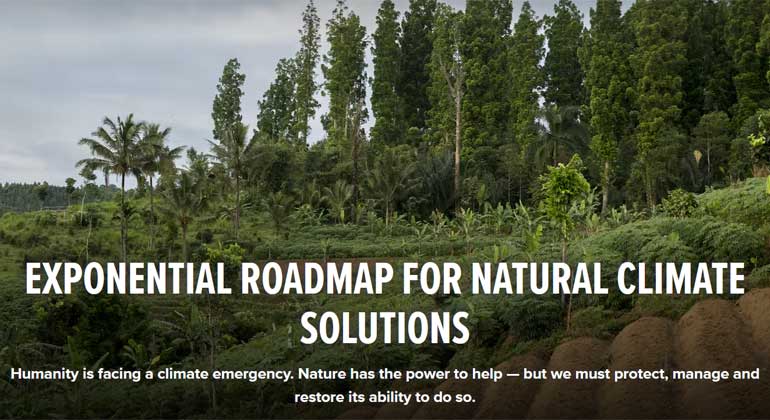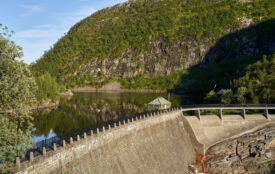Nature key for climate-safe future
The land sector, including agriculture, forestry, & natural land protection & restoration, must reach net zero annual emissions by 2030.
This is the result of a new report by Conservation International, in partnership with the Potsdam Institute for Climate Impact Research, the WWF, and the Exponential Roadmap Initiative. The report pinpoints actions needed to turn the land sector from a greenhouse gas source today into a carbon sink by 2050 and lays out a new benchmark: the “Carbon Law for Nature”.
Rooted in the latest climate science, the Carbon Law for Nature benchmark states that everyone with a land sector footprint – particularly companies, banks and governments – would need to reach net zero emissions by 2030 and collectively achieve a 10 billion tons carbon sink by 2050 across that footprint.
Currently, the balance of greenhouse gas emissions and carbon sinks from the land sector emits a net total of about 12 billion tons of greenhouse gases into the atmosphere each year that must decrease – then reverse – by 2050. Meeting this benchmark is well within reach. Soils and plants could sequester much more carbon than they already do, helping to close the massive gap between global carbon emissions and storage.
Improved agricultural and forestry practices, the report states, present significant opportunities for absorbing climate-warming carbon out of the atmosphere while at the same time supporting local economies by offering sustainable livelihoods. Notably, the report details a timeline for who, how and where is best suited to maximize the potential of these “natural climate solutions” – that is, nature-based initiatives that better protect, manage and restore natural and working lands.
“To keep the ‘safe’ climate limit of 1.5°C warming within reach, we need major investments in natural climate solutions – in addition to rapidly phasing out coal, oil and gas,” said Johan Rockström, Director of the Potsdam Institute and Conservation International chief scientist. “Even if energy and industry meet their climate mitigation targets, without urgent action in the land sector we will not be able to limit warming. These solutions aren’t reliant on hypothetical technologies or risky geoengineering. In most cases, it’s about rapidly scaling practices that have been known for centuries.”
About 80% of the climate mitigation opportunity from the land sector in the next decade will depend on transforming agriculture, diets and food waste. Protecting healthy ecosystems and avoiding deforestation from agricultural expansion is especially important; these efforts represent 30% of the 2030 natural climate solution mitigation opportunity.
The report finds that improved management of agricultural land through the action of farmers and ranchers, supported by governments, businesses and the finance sector, can achieve more than 5 billion tons of total carbon sequestration by 2030 – 90% of which is newly removed from the atmosphere; 10% is reduced emissions of methane and nitrous oxide annually. These actions include:
- Climate-smart grazing practices such as adding trees to grazing lands can provide 1.9 billion tons of emissions mitigation and improve animal health and economic opportunities for livestock mangers.
- Changes in soil management using regenerative practices like cover cropping, reducing tillage and mulching crop residues can add up to enormous carbon sequestration if achieved at scale, creating more than 2.5 billion tons in carbon sinks globally by 2030 in regions with modern industrial agriculture such as North America, Europe, China and India.
- An additional 2.5 billion tons mitigation opportunity by 2050 is possible if 50% of the world’s population chooses a healthy and sustainable diet – which means shifting diets in richer countries toward plant-based foods – while also cutting food loss and waste in half.
- More information about the Exponential Roadmap for Natural Climate Solutions
- Read the full report „Exponential Roadmap for Natural Climate Solutions“ (pdf)








